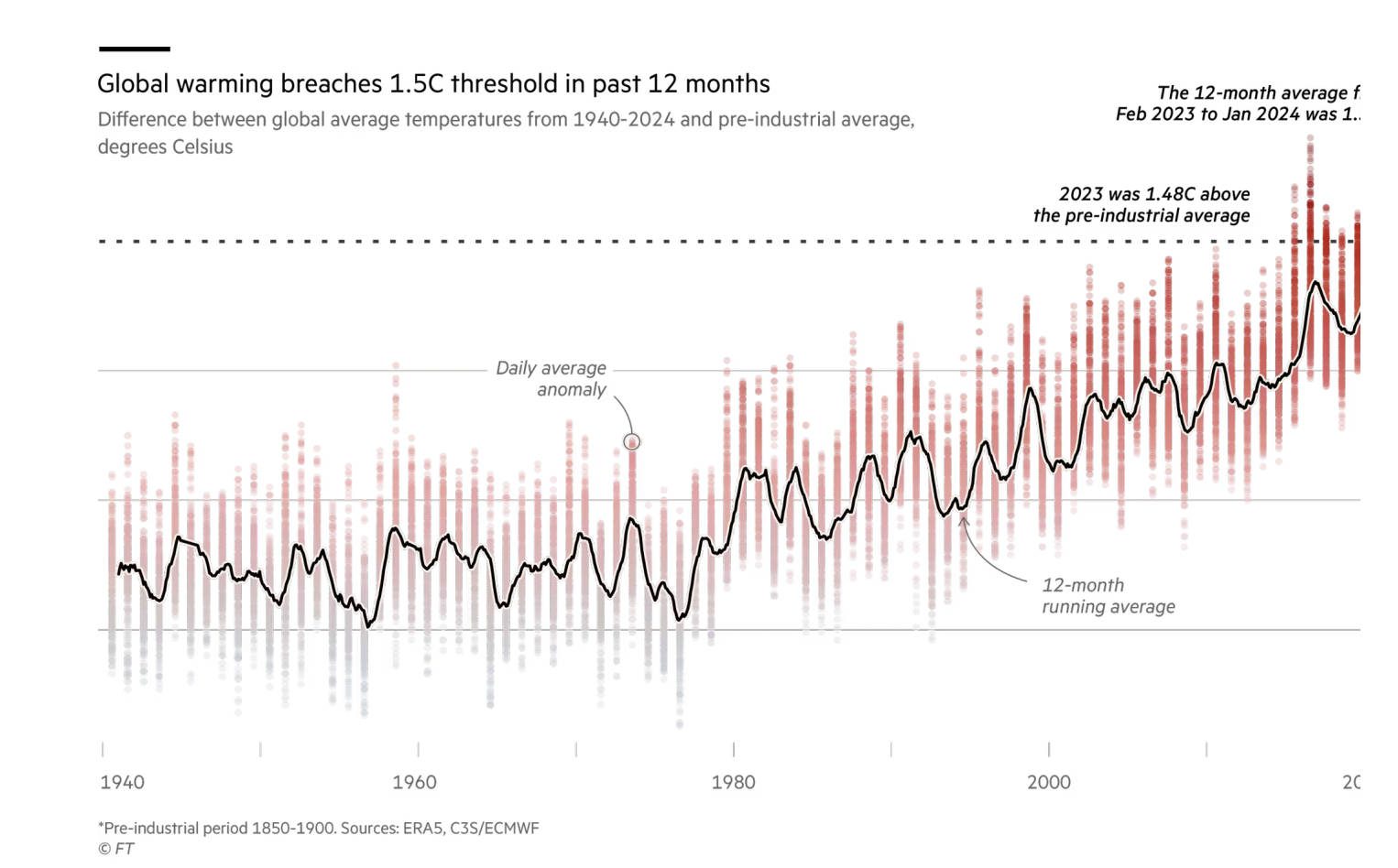1.5 Degrees Celsius Has Officially Been Breached
Overview:
The European Earth Observation Agency's recent data reveals a disconcerting milestone in the realm of climate change. For the first time, the average global temperature has surpassed the critical benchmark of 1.5 degrees Celsius above pre-industrial levels over 12 months. The findings from the Copernicus Climate Change Service (C3S) indicate that the global mean temperature for February 2023 to January 2024 reached an unprecedented 15.02 degrees Celsius, exceeding the 1.5C threshold set in the 2015 Paris Agreement. However, it is crucial to emphasize that while the breach raises concerns, it does not imply a failure to uphold the Paris Accord, as the agreement focuses on a longer-term temperature increase spanning more than a decade.
Summary:
Francesca Guglielmo, a senior scientist at C3S, underscores the significance of the sustained period at this elevated temperature level, suggesting that the time frame between the present moment and the breach of the Paris agreement limit might be contracting. The "abrupt" rise in global mean temperatures over the past nine months serves as a red flag for Sir Brian Hoskins, chair of the Grantham Institute at Imperial College London. He characterizes the data as a stark warning, emphasizing the urgent need for immediate and substantial action to align with the climate targets outlined in the Paris Agreement.
January marked the eighth consecutive month of record-breaking temperatures globally, with heatwaves, wildfires, and flooding devastating various regions. Samantha Burgess, deputy director of C3S, stresses the imperative of swift measures to address the escalating trend in global temperatures. She asserts that rapid reductions in greenhouse gas emissions represent the only effective strategy to halt the upward trajectory of global temperatures.
Examining regional variations, the report highlights how certain areas experienced above-average temperatures, such as eastern Canada, north-western Africa, the Middle East, and central Asia. Conversely, regions like the Nordics, western Canada, the central US, and much of eastern Siberia witnessed temperatures well below average, with some areas in Sweden and Finland registering temperatures below -40 degrees Celsius. The study also delves into precipitation patterns, noting disparities in wetter-than-average and drier-than-average conditions across different parts of the world. The Horn of Africa, the Arabian Peninsula, south-central Asia, Australia, and South America experienced drier-than-usual conditions, contributing to devastating wildfires in places like Chile.
Additionally, the report highlights the global sea surface temperature, which reached a record high of almost 20.97 degrees Celsius in January. The El Niño phenomenon, known for heating the Pacific Ocean surface and intensifying global warming, played a role in recent sea temperature rises. Alarming warnings come with the revelation that sea surface temperatures have already hit new absolute records, with a level of 21.12 degrees Celsius recorded on February 4, surpassing the previous high reached last August. As early as May of the preceding year, the World Meteorological Organization had indicated a 66 percent chance of the mean global temperature temporarily surpassing 1.5 degrees Celsius above pre-industrial levels in at least one year by 2027. These findings underscore the urgency for a concerted and immediate global response to address the escalating climate crisis.
Source: https://www.ft.com/content/8927424e-2828-4414-86b7-f3a991214288


